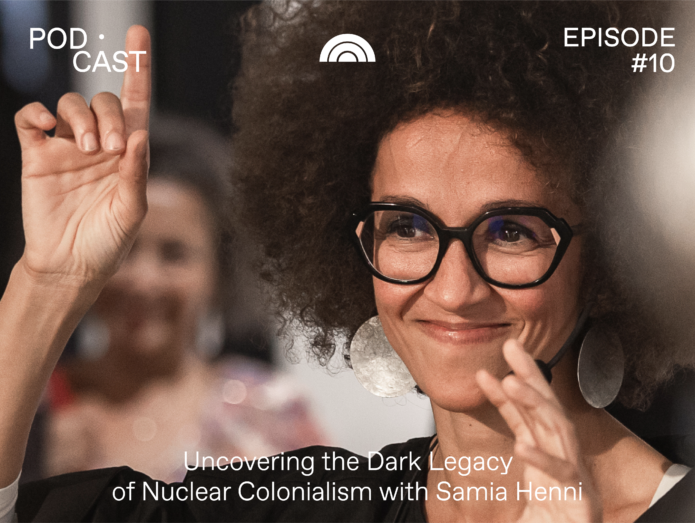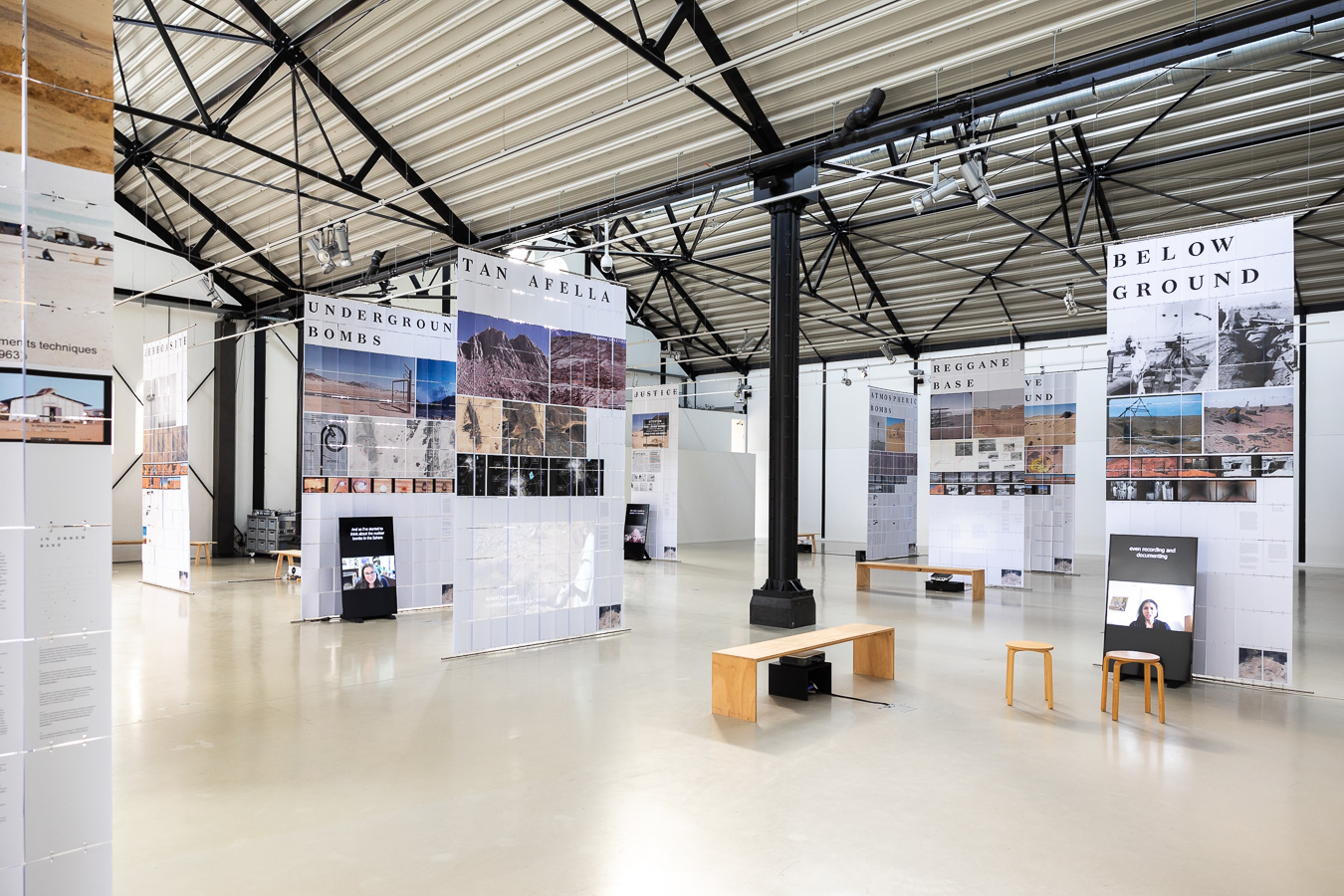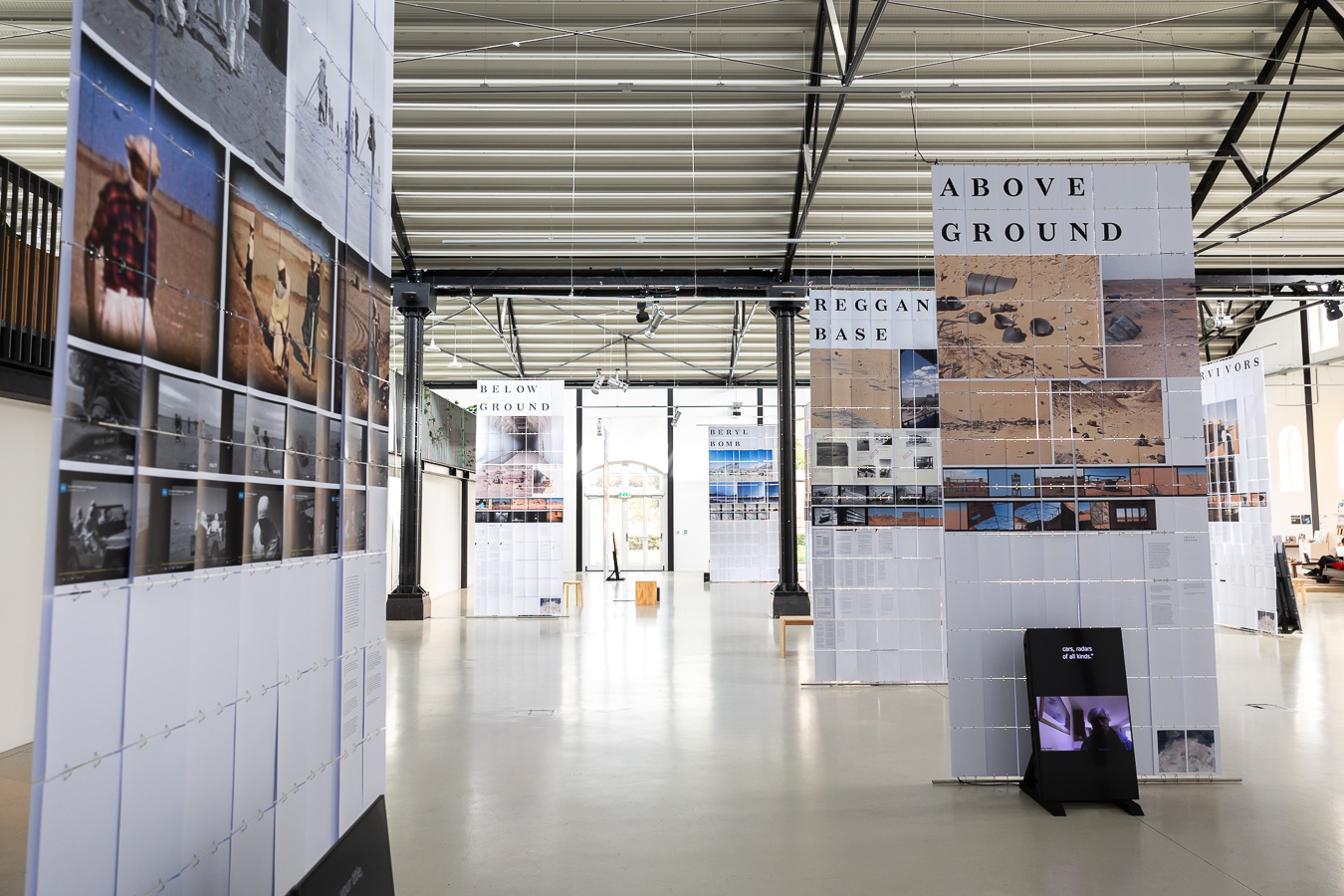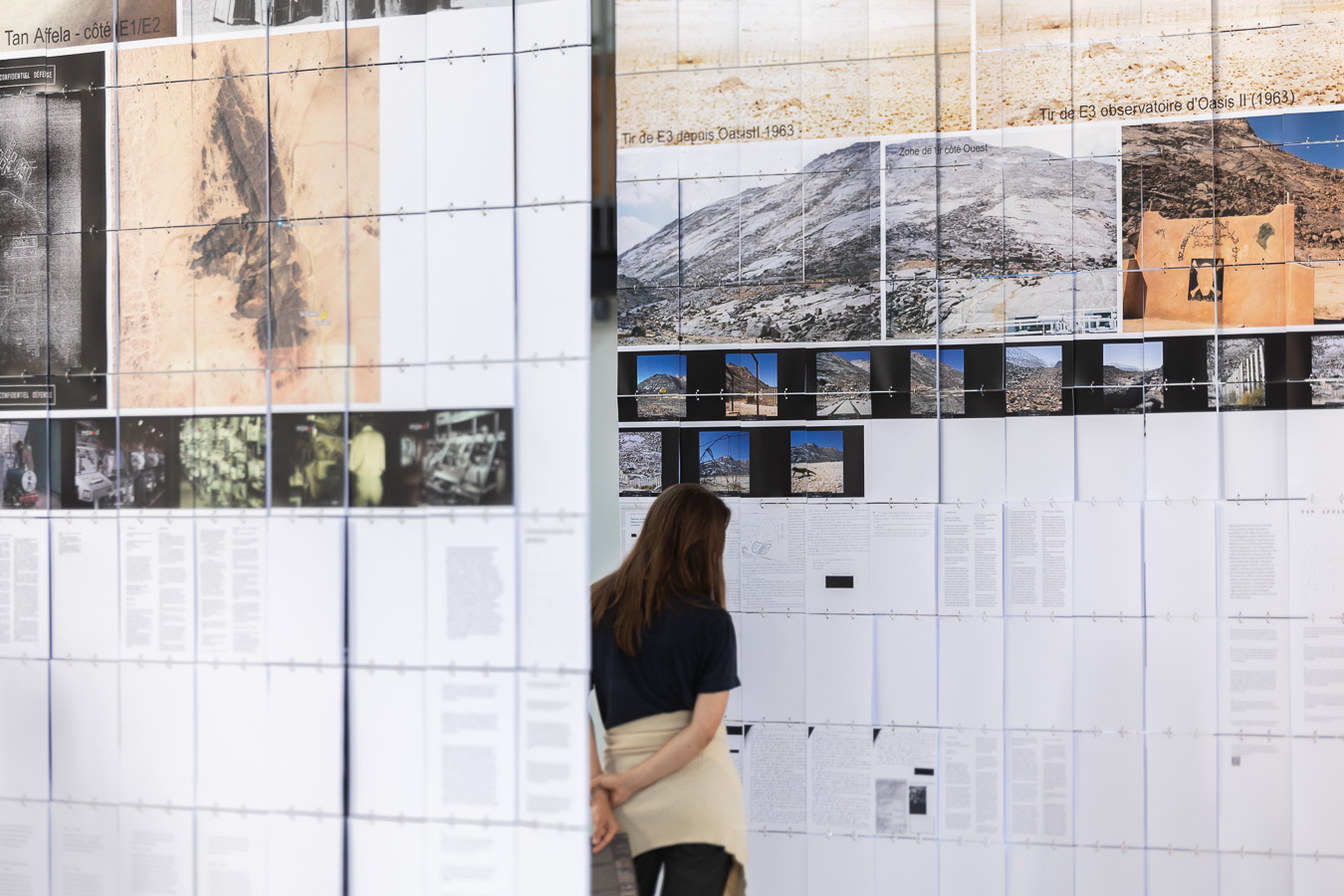"...exposing the pasts, presents, and futures of colonial toxicity." – Samia Henni in Critique d'art
We are honoured to share that an interview with Samia Henni was featured in Critique d’art, the renowned international review of contemporary art criticism. Kyveli Mavrokordopoulou discussed Henni’s research and publication which was the topic of her exhibition at Framer Framed, in collaboration with If I Can’t Dance I Don’t Want to Be Part of Your Revolution.
Read the full article below.
Introduction
In it’s latest issue spring / summer 2024 Critique d’art features an interview with Samia Henni on her research on French colonial nuclear tests conducted in Algeria. Between 1960 and 1966, the French colonial regime detonated four atmospheric atomic bombs, thirteen underground nuclear bombs and conducted other nuclear experiments in the Algerian Sahara, whose natural resources were being extracted in the process. This secret nuclear weapons programme, whose archives are still classified, occurred during and after the Algerian Revolution, or the Algerian War of Independence (1954–1962). The exhibition Colonial Toxicity: Rehearsing French Radioactive Architecture and Landscape in the Sahara emerges from Henni’s broader research project and an open access digital database entitled The Testimony Translation Project. Samia Henni considers exhibition making as a form of writing and Performing Colonial Toxicity “as an invitation to internationalise the experiences of contamination and pollution” (4). After it’s initial presentation at Framer Framed, the exhibition has since travelled to ETH Zurich and The Mosaic Rooms, London.
In the interview, Samia Henni tells Kyveli Mavrokordopoulou “The exhibition is an exposition of the urgency of reckoning with these events and their lived social and environmental impacts. The book and the exhibition call to open the still-classified archives and to clean/decontaminate the sites. Both are crucial steps for exposing the pasts, presents, and futures of colonial toxicity.” (5)
In conjunction with the show, If I Can’t Dance and edition fink and Framer Framed published Samia Henni’s publication, which brings together nearly six hundred pages of materials documenting this violent history of France’s nuclear bomb programme in the Algerian desert. The book is available through the webshop of Framer Framed.
Performing Colonial Toxicity was on show at Framer Framed between 8 October 2023 to 14 January 2024 in Amsterdam.
Samia Henni, about Colonial Toxicity
Kyveli Mavrokordopoulou
An architectural historian, Samia Henni works at the crossroads of the built, destroyed, and imagined environments. She teaches at the Federal Institute of Technology in Zurich (ETH Zurich) and her activities (online, on site and in print) move across the tightly linked formats of exhibition making and publications. Her research on war architecture and its environmental impacts raises questions around the constructions and deconstructions resulting from colonization, conflicts, nuclear weapons, and their hazardous aftermaths. The recent publication of Colonial Toxicity: Rehearsing French Radioactive Architecture and Landscape in the Sahara is the outcome of a long-term investigation of French colonial violence in the Algerian Sahara, conducted in tight collaboration with the activist-archivists of the Observatoire des Armements [The Armaments Observatory – Centre for Documentation and Research on Peace and Conflict, Lyon]. This research project was inaugurated in Amsterdam with the exhibition Performing Colonial Toxicity, jointly supported by If I Can’t Dance, I Don’t Want To Be Part Of Your Revolution and Framer Framed. Samia Henni has agreed to talk to Critique d’art about her multifaceted research.
Kyveli Mavrokordopoulou: Samia, in the past years your work has taken many forms, from exhibitions to books and digital platforms, but a theme that runs all throughout them is that of war and architecture. Your first book and subsequent itinerant exhibition, Architecture of Counterrevolution: The French Army in Northern Algeria (2017)¹, is an in-depth historical study of the spatial operations that the French army and colonial administration enforced in colonized Algeria during the Algerian Revolution (1954–62). Your edited collection War Zones (2018)² examines something similar, namely how space is shaped by times of war (but also its preparatory logics) across various historical and geographical contexts. Your latest dual book and exhibition Colonial Toxicity: Rehearsing French Radioactive Architecture and Landscape in the Sahara (2024)³ reveals an archival breadth around the toxic legacy, in the landscape and in human and nonhuman bodies, of the French atomic weapons program in the Algerian Sahara. What I find poignant in all of these is that you are not dealing with the aftermath of war – as in, ruins. You rather engage with architectural forms that sustain and perpetuate war in its manifold forms, from the battlefields to continuous colonial occupation. Could you tell us a bit more about this thematic coherence, as well as the transition from the architecture of counterrevolution to the explicitly environmental question of toxicity?
Samia Henni: During my studies in architecture, it was all about architecture and the built form in times and places of peace. Similarly, in my life as an architect, in speaking about clients’ buildings, we rarely broach how architecture can also be a tool used in war zones. What I wanted to suggest in my work is that colonialism is primarily about destruction and war, and that architecture is one of the means of this destruction. While I have focused on the case of French colonial rule in Algeria, through my edited volumes, I tried to show that this is not an exception but something all-encompassing, in fact raging as we speak. Architectural planning and spatial organization is supporting it, and this intersection is really relevant to what I do. My move from colonial architecture and warfare to colonial toxicity and the environment was a response to the field. Prior to Colonial Toxicity, I also edited Deserts Are Not Empty (2022)⁴ to explore how the dynamic of nuclear weapons testing is also at play in other deserts, hot and cold. Deserts represent one-third of the land’s surface, and most of the resources feeding our cities and technologies (oil, gas, lithium, uranium) originate in them. Now that we are starting to acknowledge that warfare and colonialism go hand in hand, my argument becomes: warfare is also about the destruction of the environment in an ecological sense. And I worked with a clear-cut example: the Sahara as a firing field for the French army.
Kyveli Mavrokordopoulou: Performing Colonial Toxicity, the itinerant exhibition tied to Colonial Toxicity, uses another term: performativity.⁵ And performative utterances don’t merely describe, but precisely perform the actions they designate, including acts of violence. We could read “rehearsing” as a performative act, too. Similarly, you are also very attentive to how language is, still today, both caught between the constraints of, and performative of, colonial grammar. I have encountered in your texts multiple attempts at “linguistic revision” – attempts to historicize but also surpass terminological inheritances from colonial archives and military jargon.
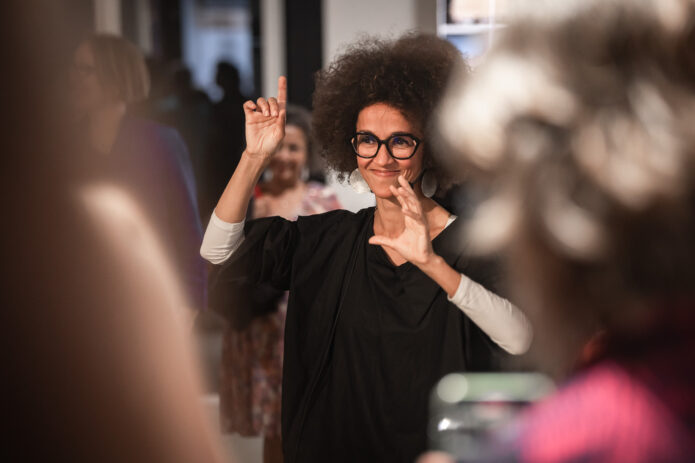
Tour by Samia Henni through the exhibition Performing Colonial Toxicity (2023). Photo: Maarten Nauw / Framer Framed
Samia Henni: This is indeed very much what I try to do. Roland Barthes’s essay “African Grammar”⁶ has been pivotal to me in that regard. Barthes explains how the French government, army, and media used language to mask colonial realities. For example, the term “war,” referring to the Algerian War of Independence, was called instead “the events of Algeria” for a number of reasons that I explain in Architecture of Counterrevolution. Barthes calls this “cosmetic writing.” The military and colonial archives that I have been able to research withhold different strata of power through language: the language used by the military personnel, the language used between military leaders and officers, and the language used internally among military leaders. The same event is sometimes described in completely different terms. There is a process of linguistic indoctrination at work, which I am only able to learn from the language of the oppressors. It is a sort of psychological warfare, and it has its own effects. Institutions like the ECPAD (Etablissement de Communication et de Production Audiovisuelle de la Défense), where I was able to source parts of my research on the French nuclear weapons program in Algeria, have also been instrumental in producing a certain language and images of war.
Within my work, I try to offer ways of writing and formulating taxonomies. In Deserts Are Not Empty, for example, I invited contributors to propose a poem about the desert they were writing about, written by a poet of that region in the original language of that region. This was for me to challenge the languages we use (English: imperial and colonial). We introduced these poems in the original languages and then we translated them. This is another way of saying that we have to acknowledge the languages of the places we work in and on. For instance, in Architectures of Counterrevolution, I barely used the term “les indigènes d’Algérie” or “les musulmans d’Algérie,” which were the official terms used by the French colonial administration. This was a deliberate decision as a writer. A few scholars might deem my work anachronistic, but why can’t we, today, knowing the history and violent connotations of those terms, use other terms? I strive for an active use of language that tries to be attentive to its performative power.
Kyveli Mavrokordopoulou: This is also what you did in a recent article, where you suggest we should name the radioactive residues as “jerboasite,” in reference to the names of the four atmospheric bombs detonated by the French army and code-named gerboises [jerboas] after the tiny jumping desert rodents.⁷ While I do find the act of naming poignant, I also wonder how language can naturalize socio-scientific processes by isolating, for example, a chemical element from the political-scientific context of its creation.
In a similar vein, I want to hear more about your usage of the term “toxicity.” Toxicity, in your work, describes a material-semiotic condition, but as a category it is deeply malleable, shifting at the intersection of risk assessment, scientific profit, and sociocultural norms of health and safety. What is toxic for a former veteran who worked in the field is probably not formulated as such in the military archives you research.
Samia Henni: You are right that language normalizes. In the archives I explored, however, the term used was not “toxicity” but “radioactivity.” At the ECPAD, for example, it was about facts related to the production of radioactivity: the date of the bomb, the description of the testing ground, what we can see, the copyright, the date of the image. The term “toxic” does not come up in a single document. Similarly, the explosions are referred to as “tests,” and I explicitly avoid this term and instead use “bombs.” Even the overuse of “radioactivity,” as a term, obfuscated the contamination of human and nonhuman lives. In each of these examples, there is a huge difference between the two terms. And the more I was working with these materials and wondering how I could create a form of publicness, the word “toxic” became ever- present. Everything I was seeing and reading was toxic. Moreover, the fact that we cannot access the archives is likewise toxic. This is really what I want to encapsulate with “colonial toxicity”—a violence both temporal and spatial, both physical and psychological. As for the act of coining “jerbosasite,” I would argue that the situation begs a different approach, since so much of the archives containing information about contamination and pollution remains classified.
Kyveli Mavrokordopoulou: Since you mention a different approach and classified archives, I have to ask about the way your work revisits traditional academic formats. Colonial Toxicity is in itself a curious object, with an “anti-academic” format. It’s rife with archival images from various sources (military and state archives, activist documentation centers, personal archives). I am particularly drawn to the extensive captions – as an art historian, I know how much work goes into those! – in which you adopt, at times, a very personal tone. For instance when you mention that the document isn’t available for consultation anymore and you can be contacted to supply it to interested scholars and activists. I actually sometimes spent more time with the captions than with the text! You hijack the very (academic) convention that is captions.
Samia Henni: This is indeed what I had to do because of the contexts and conditions. The book is expressly affordable and actively light and obtainable in order for this research to continue to be used in academia but also in activism, among victims or interested scholars. It is made to be very accessible. And it is true that the text is much less extensive than the images, but in this specific case, since the institutional archives are classified, for me the very first step was to bring together sources that visualize and provide readers with evidence – a simultaneous visualization and materialization of colonial toxicity. We know that radioactivity is invisible, and this is why this book orchestrates the reader’s very first encounter not with text but with image. And yes, it can be redundant, but again, this is very intentional. As readers, we can continually refer to the very detailed captions, which contain information on where they come from and where they can be found, so, again, people can find them and do further work. Part of my initial impetus was mulling that over: What if the captions are also part of the text? We had very long discussions with the graphic designer and publishers! First images, then captions, then text. And the reader is actually not obliged to read the text. Images and captions are meant to be self-sufficient. It’s very experimental.
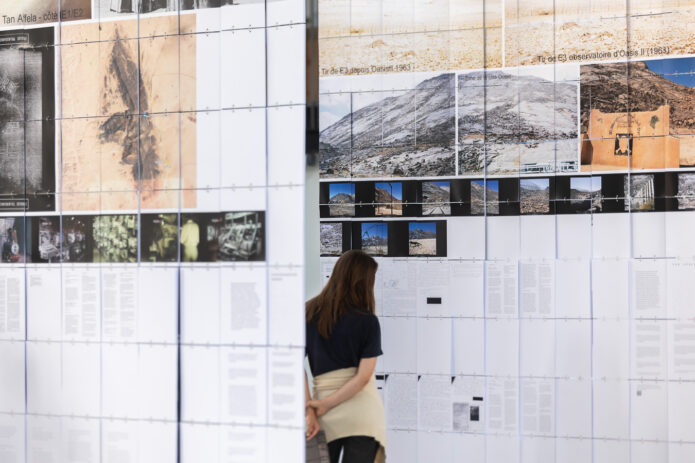
Installation photo of the exhibition ‘Performing Colonial Toxicity’ (2023) by Samia Henni at Framer Framed, Amsterdam. Photo: © Maarten Nauw / Framer Framed
The text encapsulates another part of the story that is not in the images. The book is split in two, reminiscing on the two sites where the nuclear bombs exploded, Reggane and In Ecker. And even if there is a risk that the book will be dismissed as not abiding by academic standards, for me it’s important to state that part of my intellectual project is to rethink the way we do academic research. I would argue that this book is doing exactly the kind of research we deem academic, just not according to some academic protocols because of specific contexts and conditions. Let’s start with the image and ask: What if the image is text? And what if the image can tell a different story? What text, what story, does an image write or say? The goal of this immersion into a sea of images was to offer, at once, an assemblage but also an assembly of images.
Kyveli Mavrokordopoulou: Your exhibition is also a bit like a book, rife with images unfolding in space. The book and the exhibition are intimately related, not only in time (they were inaugurated and launched more or less simultaneously), but also in how they defy curatorial and book conventions. In Performing Colonial Toxicity you inject the assemblage of images again with a distinct subjectivity, a personal tone, that counters hegemonic and paternalistic patterns of archival curation. Elsewhere, you have spoken of exhibitions as a form of writing.⁸ Could you elaborate further on that, as well as the points of friction between writing a book and making an exhibition?
Samia Henni: The book and the exhibition might be intimately connected, but, importantly, they are not the same. In the book, you have hundreds of images, it becomes a repository of archives. It is a nearly six-hundred-page book that is repeating, rehearsing, and re-insisting on the fact that these places exist and are radioactive. The exhibition works with images in a different way, going against the potentially flattening narratives of some of those visuals. I perceive it as an invitation to internationalize the experiences of contamination and pollution. Next to the images, I created videos, which reveal the current conditions of the site as well as filmed interviews with a number of colleagues, from scientists and physicists who have conducted research on the site and taken samples to literary scholars and historians of science and technology, like Gabrielle Hecht and her important work on uranium. Secondly, I also see the exhibition as an invitation to educate ourselves about the consequences of human-produced radioactivity. It strives to offer a multidisciplinary perspective on the experiences of Saharan and French victims through the act of spatialization, so visitors can interact with it, be affected by it.
Kyveli Mavrokordopoulou: When I visited your exhibition in Amsterdam, I certainly experienced this affective quality through its scenography. The sheets of paper hanging from the ceiling, for example, were fragile, and as I moved in the space they interacted with my bodily movements, swaying as I passed by. This fleeting aspect of the installation can be reminiscent of the fleeting and pervasive nature of the matter at hand: radioactive dust. The scenographic apparatus performed what archival language has suppressed.
Samia Henni: The effect on the body was part of what I wanted to explore—how these stories and this history perform on you in an embodied way. I wanted a fragile, light, and repetitive form that could be folded and sent around the globe to multiple institutions. You can hang it, fold it, cut it, inviting people to think of and with their bodies. I really wanted to affect the visitors. You cannot leave the exhibition and say it’s all okay. You need to feel it emotionally. My intention was also to make sure that visitors understand the scale of it—that this is not a French-Algerian thing. Weapons destroy human life but also animals, the air, water, and the natural and built environments. What cities and settlements were affected, what kinds of weapons were used.
It’s also about the witnesses, and this brings me back to language. It was crucial for me to include the testimonies of victims in the exhibition: their language from their own experiences, from their own bodies and the way they transmitted this disease transgenerationally. It is spoken about with their own emotions. The exhibition is an exposition of the urgency of reckoning with these events and their lived social and environmental impacts. The book and the exhibition call to open the still-classified archives and to clean/decontaminate the sites. Both are crucial steps for exposing the pasts, presents, and futures of colonial toxicity.
CRITIQUE D’ART : actualité internationale de la critique d’art / The International Review of Contemporary Art Criticism, no. 63, spring/summer 2024, pp. 111-126.
Available online at URL : http://journals.openedition.org/critiquedart/114527 ; DOI : https://doi.org/10.4000/11t7s
Notes
1. Henni, Samia. Architecture of Counterrevolution: The French Army in Northern Algeria, Zurich: gat Verlag, 2017. A second edition came out in 2022. A French translation was published in 2019 by editions B42
2. War Zones, Zurich: gta Verlag, 2018. Edited by Samia Henni
3. Henni, Samia. Colonial Toxicity: Rehearsing French Radioactive Architecture and Landscape in the Sahara, Amsterdam: If I Can’t Dance, I Don’t Want to Be Part of Your Revolution and Framer Framed; Zurich: Edition Fink, 2024
4. Deserts Are Not Empty, New York: Columbia Books on Architecture and the City, 2022. Edited by Samia Henni
5. The exhibition took place at Framer Framed, Amsterdam, October 8, 2023–January 14, 2024. Future iterations will take place at the gta Exhibition, ETH Zurich (March 6–April 2, 2024) and The Mosaic Rooms, London (March 22–June 16, 2024)
6. Barthes, Roland. “African Grammar,” (1979) in The Eiffel Tower and Other Mythologies, Berkley: University of California Press, p. 103-110. The essay was initially published in 1957, the same year as the Battle of Alger
7. Henni, Samia. “Jerboasite: Naming French Radioactive Matter in the Sahara,” e-flux architecture, December 2022, https://www.e-flux.com/architecture/half-life/508392/jerboasite-naming- french-radioactive-matter-in-the-sahara/. Terminologically, “jerbosasite” mimics “trinitite,” the green, glassy substance formed from the sand at the Trinity Site in New Mexico at the time of the first atomic bomb test on July 16, 1945, which was named as such in American Mineralogist in 1948
8. Henni, Samia. “Exhibition as a Form of Writing. On ‘Discreet Violence: Architecture of the French War in Algeria,’” Parse Journal 13, no. 1, Spring 2021, https://parsejournal.com/article/ exhibition-as-a-form-of-writing/
- ECPAD - Observatoire des armements, Centre de documentation et de recherche sur la paix et les conflits
- Personal website of Samia Henni
Links
Ecology / Action Research / The living archive / Colonial history / Contested Heritage /
Exhibitions
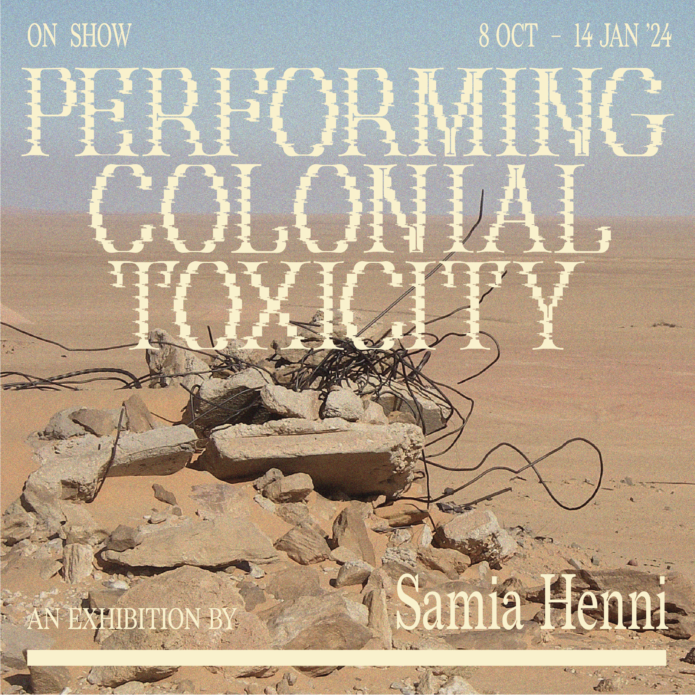
Exhibition: Performing Colonial Toxicity
An exhibition by researcher and architectural historian Samia Henni, in collaboration with If I Can’t Dance, I Don’t Want To Be Part Of Your Revolution
Network
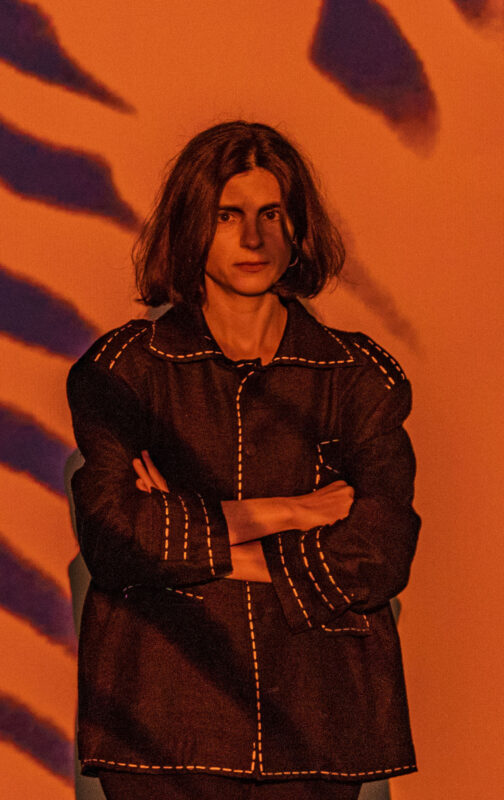
Kyveli Mavrokordopoulou
Art Historian, Curator

Samia Henni
Architectural historian, Exhibition-maker
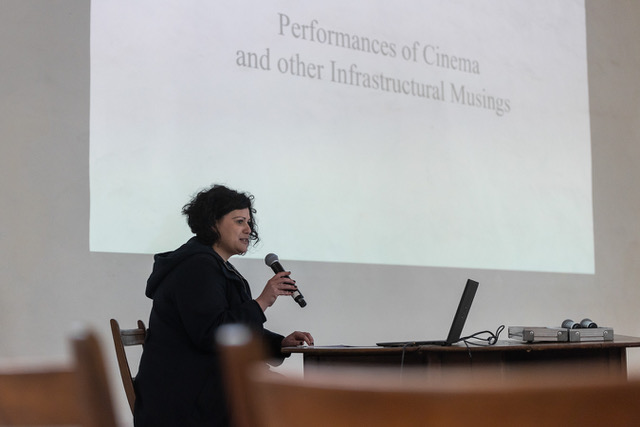
Megan Hoetger
Curator, Researcher
Magazine
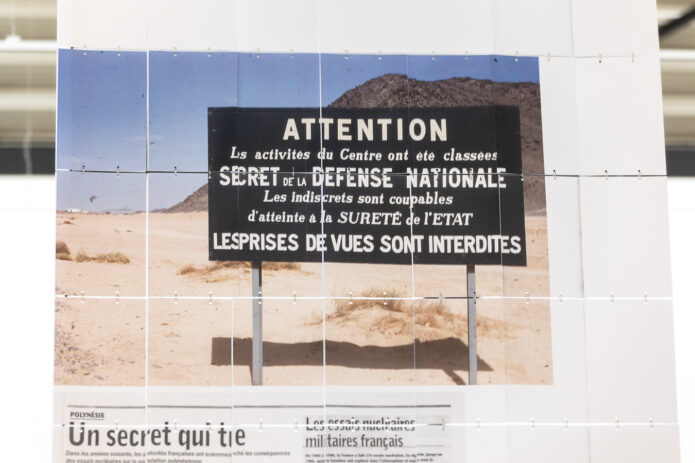
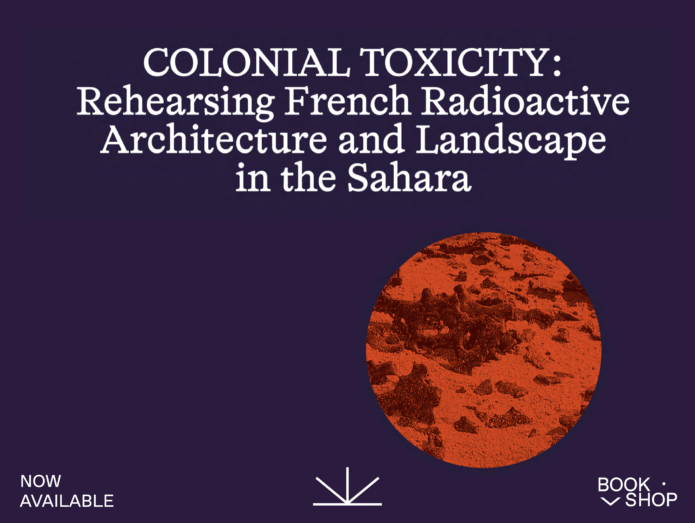
Bookshop Selection: Colonial Toxicity by Samia Henni
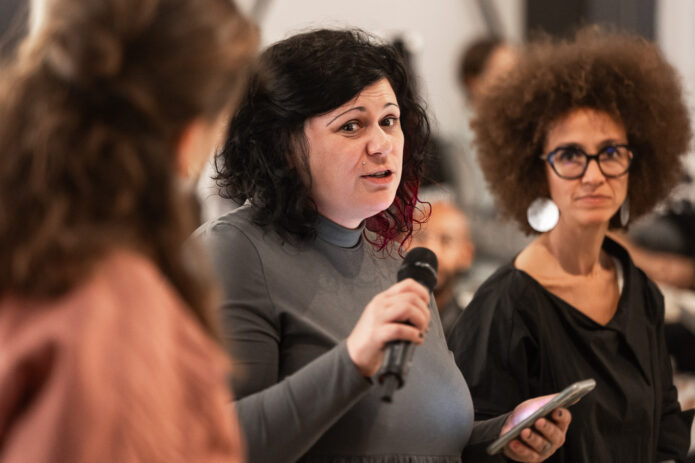
Video: Megan Hoetger in conversation with Samia Henni
